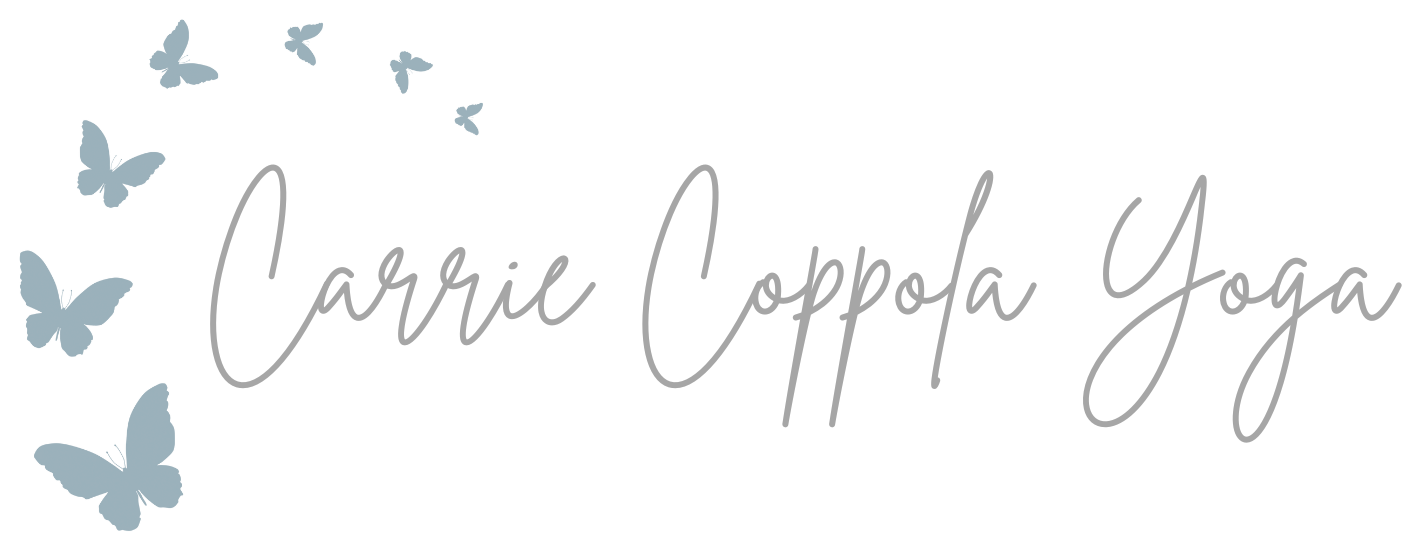The first question gave me an opportunity to exam my teaching. My hope is to provide a space for you to be present as you are practicing. My intention when teaching is to help you see, feel and experience your highest potential; to allow you to explore a posture further than you believe you can. From there you may see when you are pushing too hard or holding yourself back from experiencing your fullest potential. Hopefully, through this intention you will find a space to take your new connection, insight, awareness off your mat and into your every day life. For some, this may appear like goals on our mat. Many times goals and intention seem one in the same. Our challenge, on the mat, is to differentiate between the two. My challenge as a teacher is guiding you to embrace those concepts and come to your own understanding.
A key difference between a goal and an intention is outcome – a goal is focused toward a specific outcome; an intention has no future outcome. When we set a goal we plan it, apply discipline, and work hard at achieving the goal. In a goal our vision is narrowed, limited toward the future, the accomplishment of the task, the change we desire. All our focus and energy is directed toward the goal.
In setting an intention we create a path and put ourselves on that path. Each moment on the path presents an opportunity for watching our progress, the ebb and flow, the possibilities and potential. The path may lead us to a place beyond our imagination, a place we could not see or experience through setting a goal.
We live in a world that is very goal oriented, very focused on outcomes. Often goals are directed by the outside world – what others think, what others want for us. Many times goals lead us to a place of dissatisfaction. We believe when we reach the goal we will achieve the happiness and peace we seek. This narrow view limits our ability to stay in the moment and to be in the process of living. That definition may create disconnect when we come to our mat.
On our mat, a goal creates a fixed idea of what our poses will look like, feel like, what the experience will be. This goal in itself may limit our practice. For example, if we have a goal to master crow and in today’s practice and our feet do not get off the floor, the disappointment may prevent us from experiencing the openness, the awareness, the whole process practicing crow provided. A limited vision such as that, may keep us from our highest good, and prevent us from a full experience of our practice. It further limits how that experience expands the next asana, the transition. As well it may prevent us from practicing crow.
An intention on our mat would be to practice crow but bring forth an opening to be wherever we are today. For some, in that practice, crow with feet up. For others, it would be bringing their weight further forward with feet still on the ground. A key to intention is letting go, detaching from the outcome. Judith Lasiter says that to be detached is to “stand in the middle of the marketplace, with all its confusion and noise, and to remain present to yourself and to all that is.” We stand on our mat, with all the confusion and noise within, and become present to where our practice leads us. Through a discovery within the experience of practicing crow, there may be a deeper expansion through the next pose, the next transition. Our practice, that day, as well as each subsequent pose would also hold that possibility. In order to create the space of intention on our mat, we can envision a new understanding of goals.
This new vision of goals can allow a freedom to bring them to our mat, and a widened vision of goals off the mat. It is that openness, that flexibility, that is the connection of goals and intentions. To ground a goal in intention, a key question to ask is, as Jack Kornfield says, ask yourself “is it a path with heart.” There a space is created to look at what matters to you, what matters to your heart. The freedom here is a release from being defined by our achievements. A place to be present with all that is. We bring to our mat our “goal” to do crow, grounded in intention, to be in the process of how we will get there, always open to the experience. Grounding our goals in intention creates a more fluid, dynamic space. A space to honor your divine nature. A space for joy to live. A goal grounded in intention connects our inner and outer worlds.
It may appear when I clap for you, cheer for you, tell you great job, that I am leading you toward a specific outcome, a goal. My encouragement arises from watching you in the process, rather than the end result. The encouragement is in observing your willingness to see and realize your potential, to allow you to experience yourself beyond your finite mind. This process is one of receiving grace. Anne Lamott says “grace means you’re in a different universe from where you had been stuck, when you had absolutely no way to get there on your own.” You let go, open and allow grace to flow through you. Your willingness to practice crow without an expectation move you through fear of the pose. Your openness and willingness lead you there – your practice leads you into the possibilities of your heart. When you experience that I have to cheer.
So my goal for all of us is to meet on our mats, root in our own intentions, and allow that to guide us all toward our heart’s path. From this new space, may you continually be led on the path of greater knowing of who you are at your center, of rising to meet every moment with openness and awareness and to find a space where life flows through you.
Peace,
Carrie

